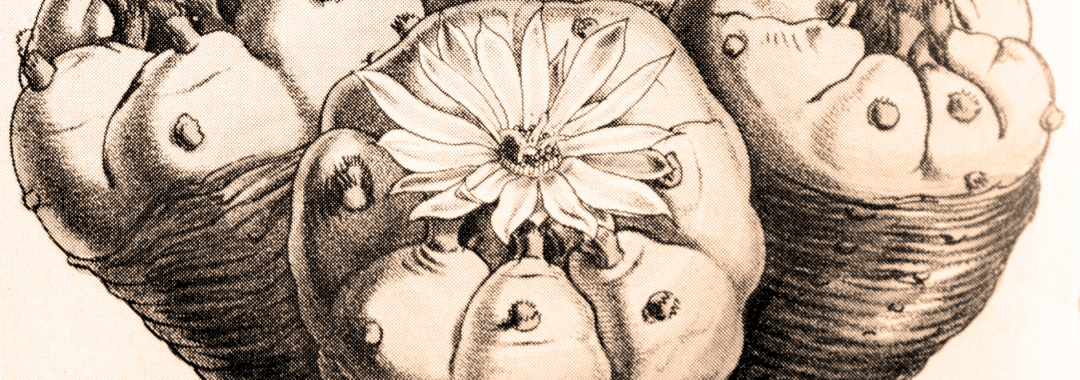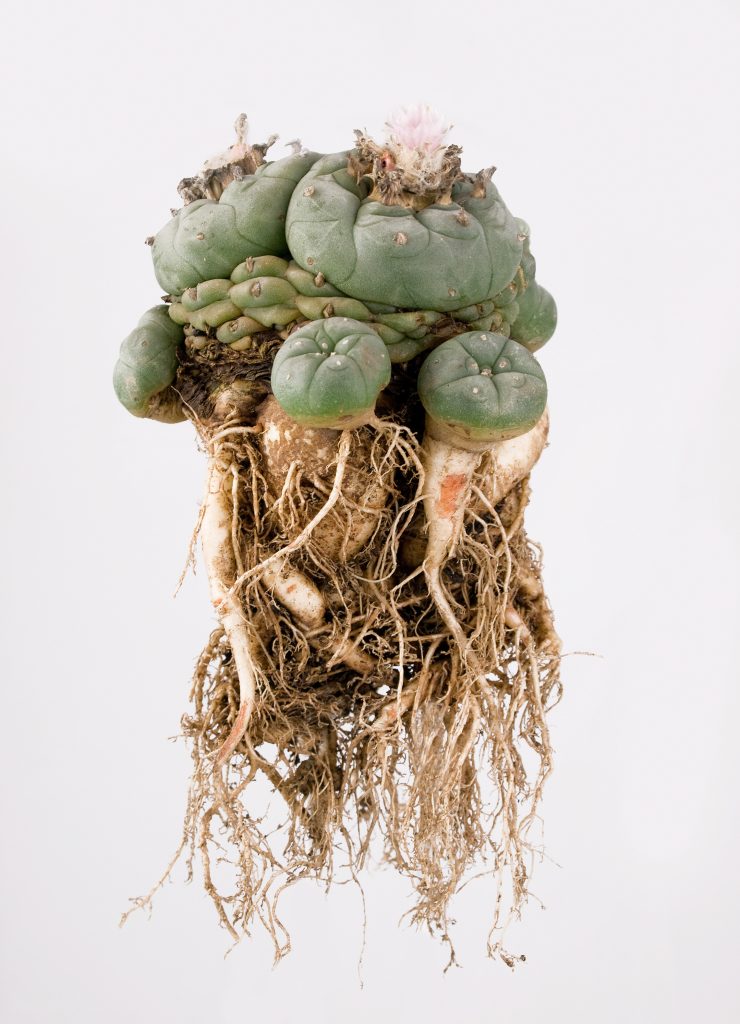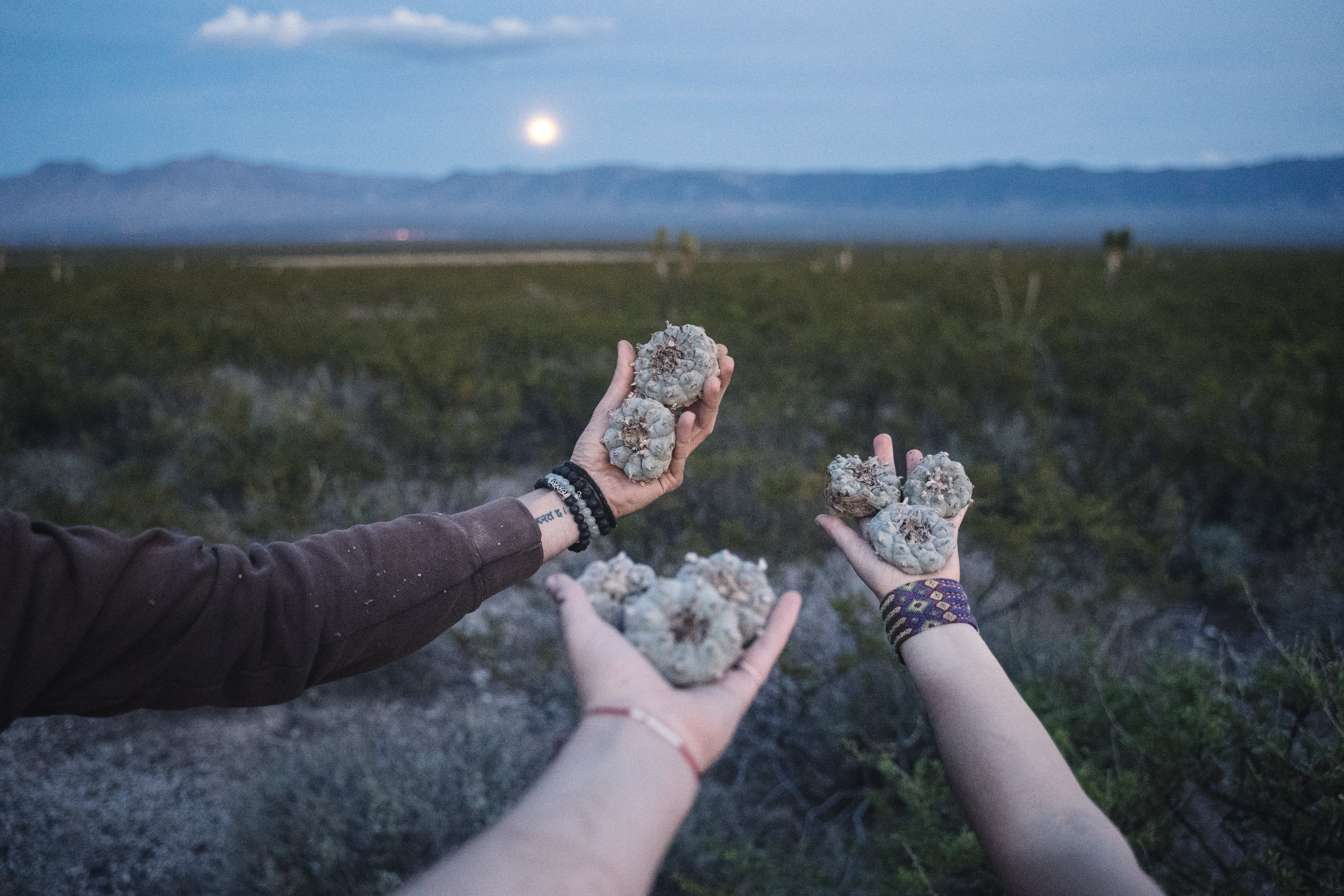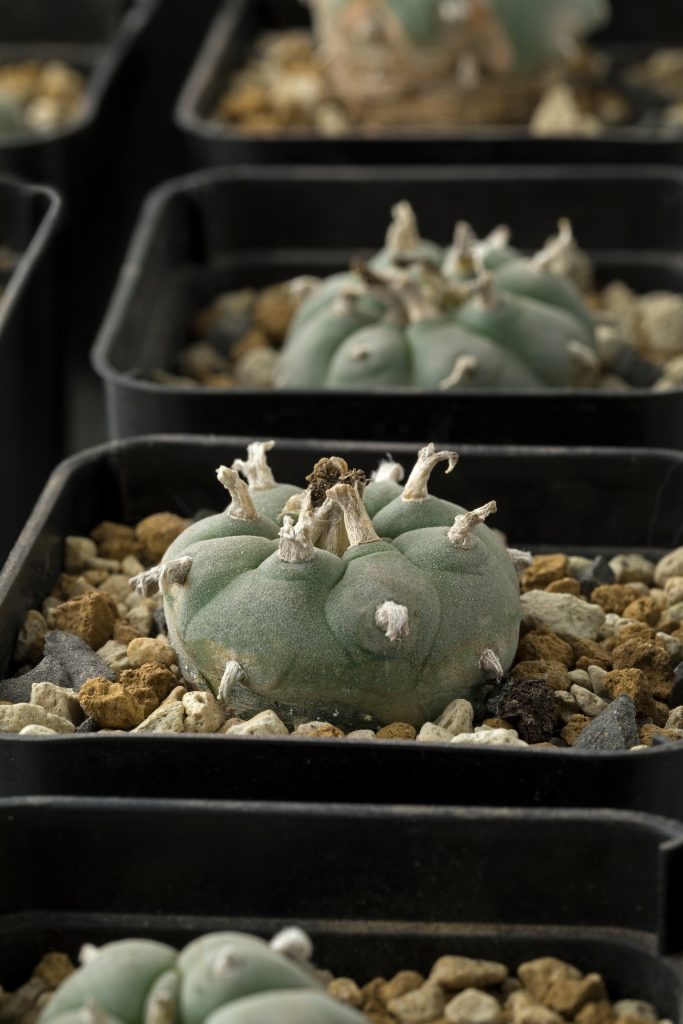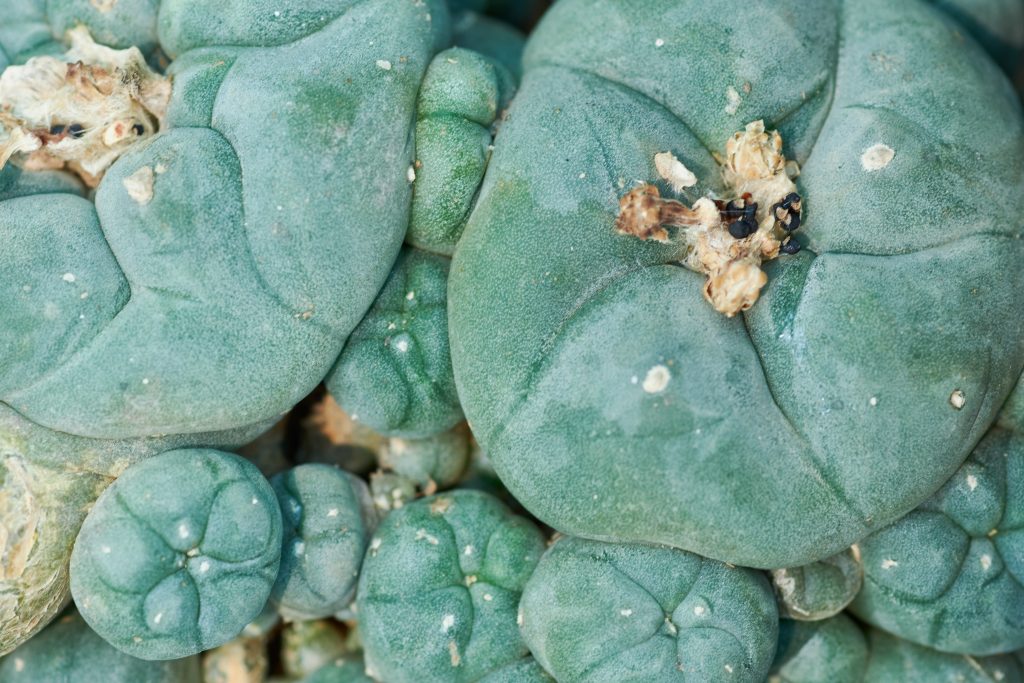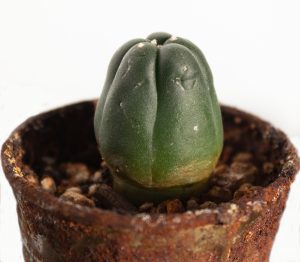Names other than Peyotl
You can find this cactus under several names including Mescal, Peyote, Peyotl, Peyote Lophophora Williamsii, Lophophora diffusa or echinocactus Williamsii (Latin name), Bouton mescal (common name) and Salm dyck.
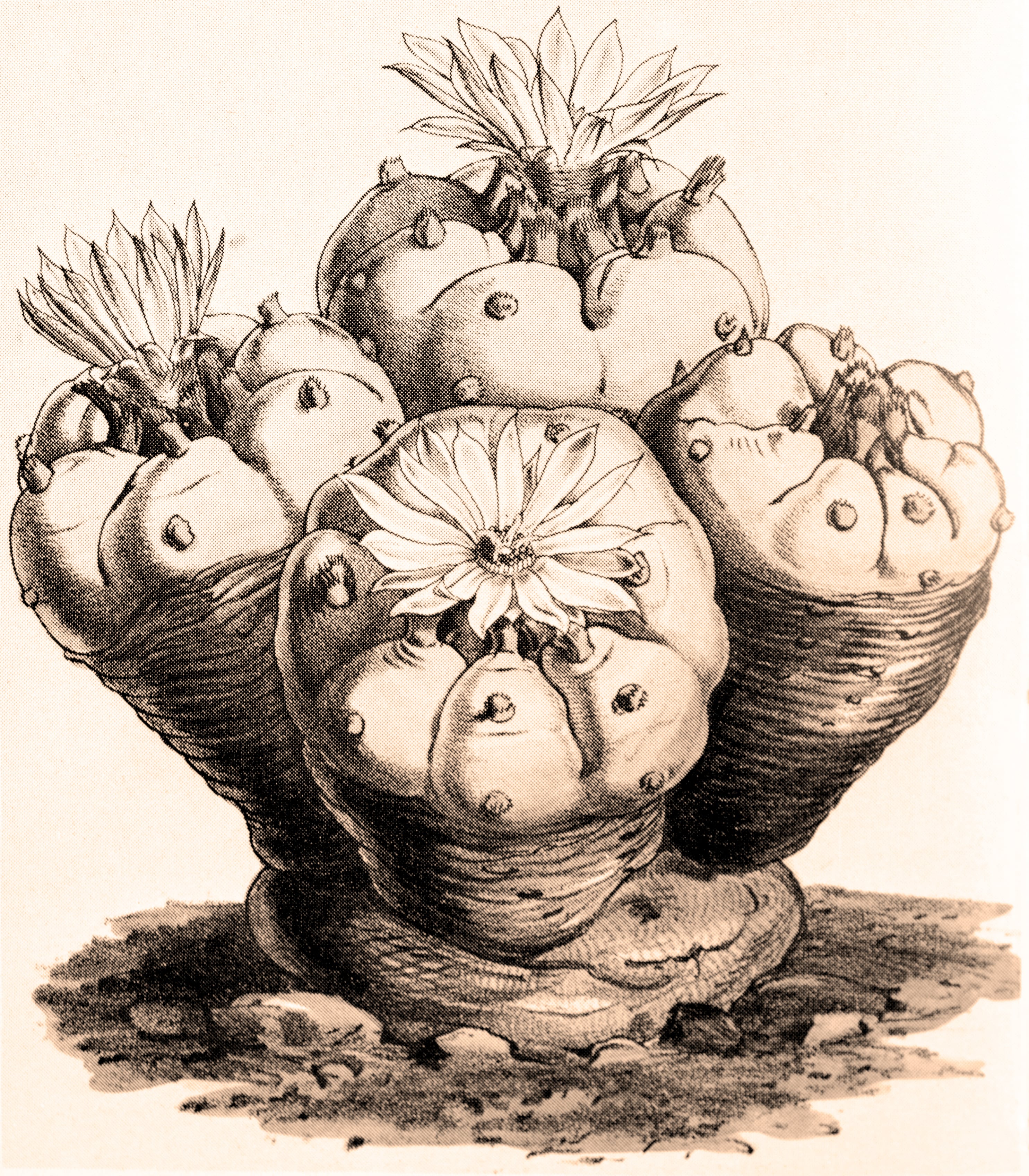
In which country does Lolophora Williamsii grow?
The Peyote, hallucinogenic cactus, grows naturally in the Chihuahuan desert, shared by two countries: the United States (in the south, in Texas) and Mexico. It is in these areas that the ideal soil for Peyote is found. This cactus needs a dry and very mineral soil. This is where the Lophophora Williamsii will like best. It is not easy to find it in its natural habitat due to its small size (a height of about 5cm). It should be noted that since peyote was legalized in California for medical research purposes, several groups, followers for its great value on health, are going to search for it. Intensive gathering could lead to the disappearance of peyote in the wild. This is why it is now protected by CITES (Convention on International Trade in Endangered Species of Wild Fauna and Flora). It is therefore not desirable to collect them. Reading this article will show other alternatives.
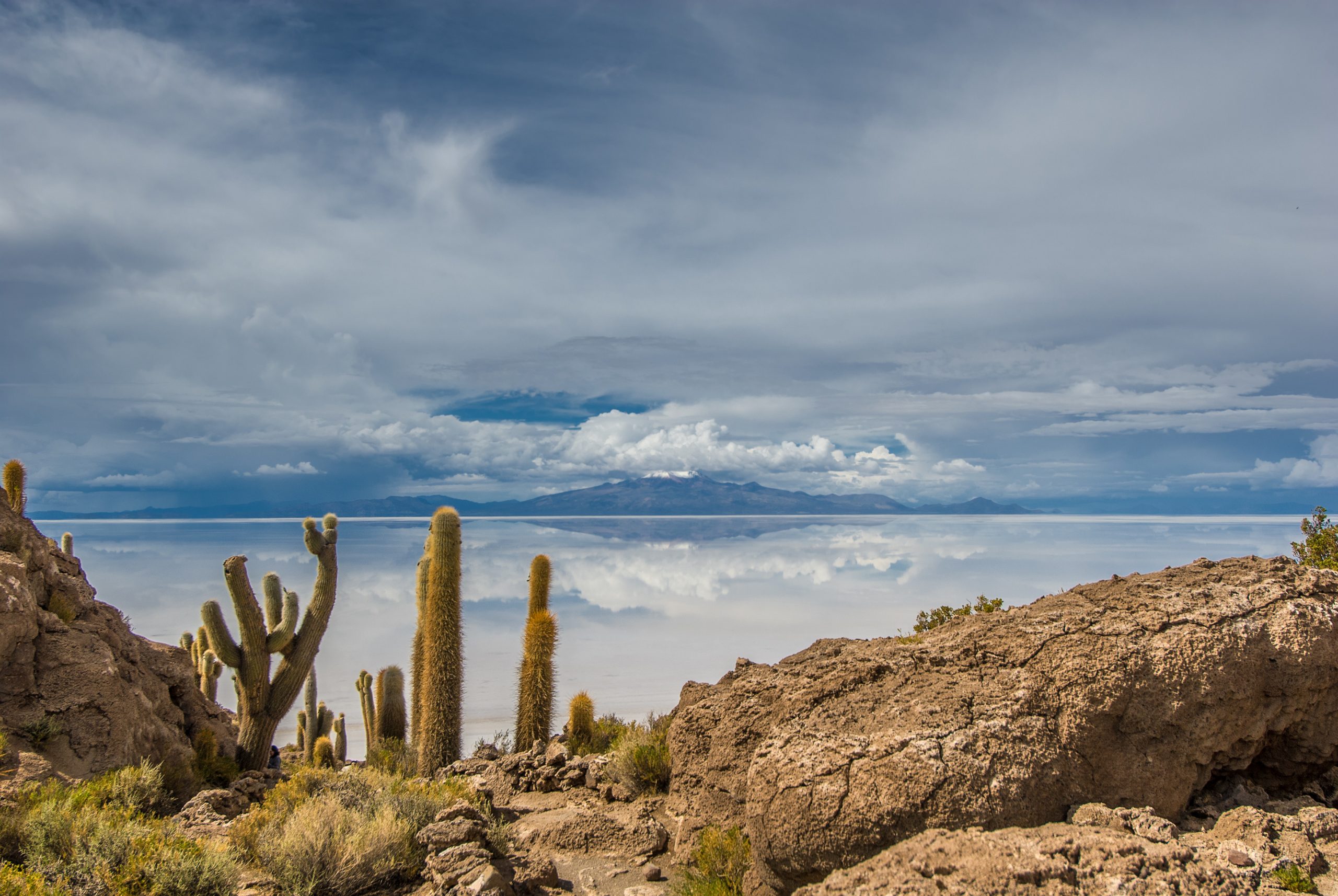
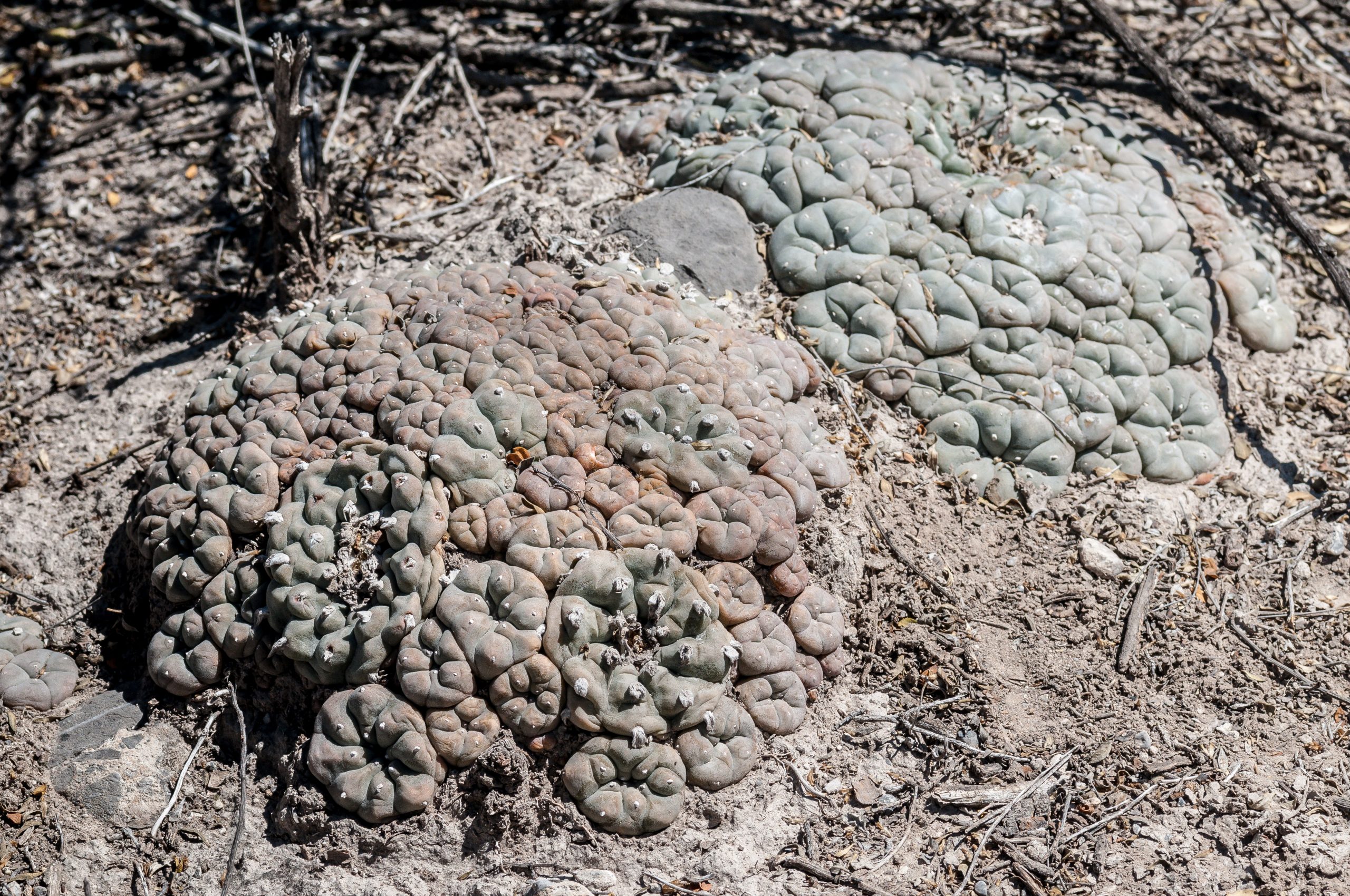
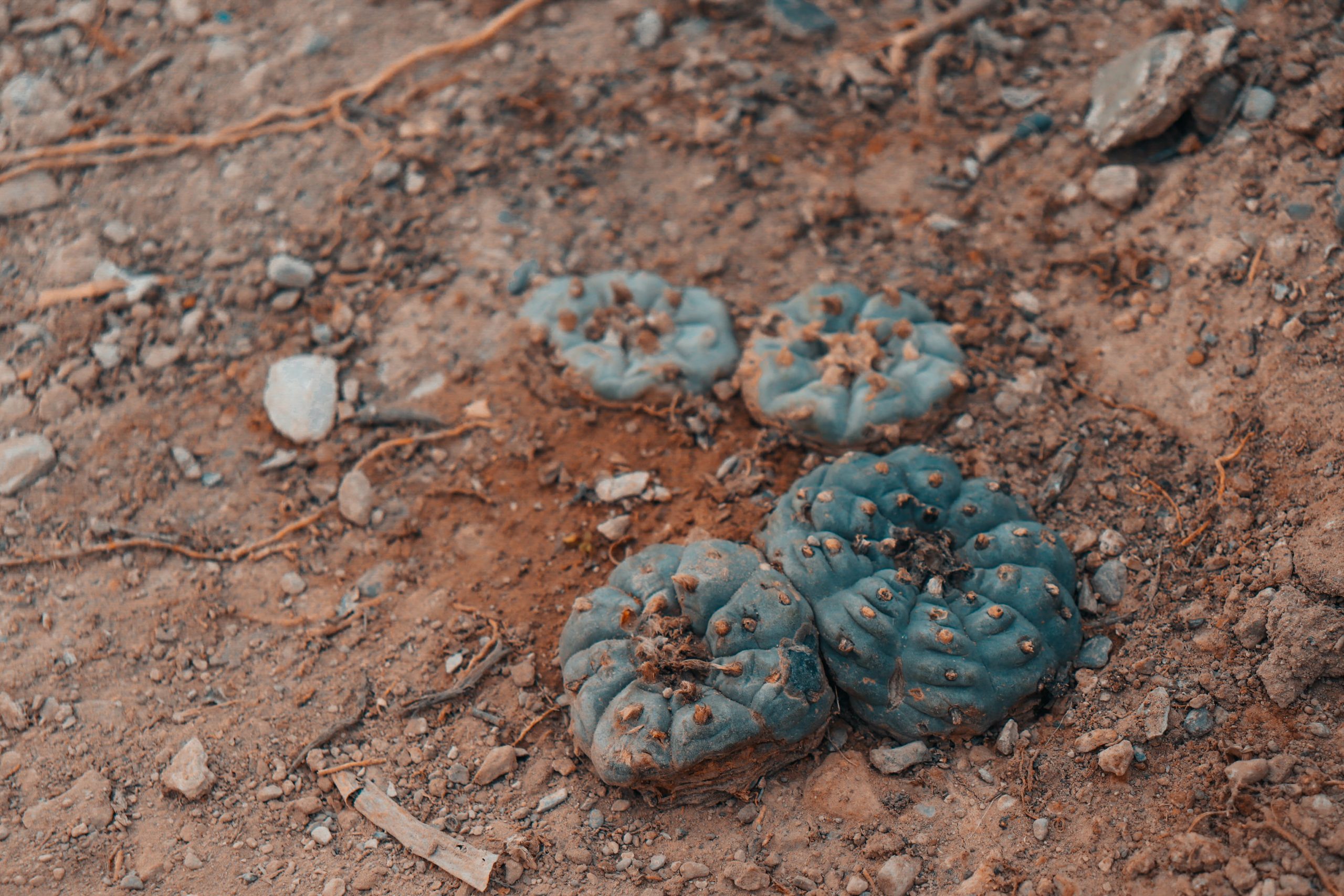
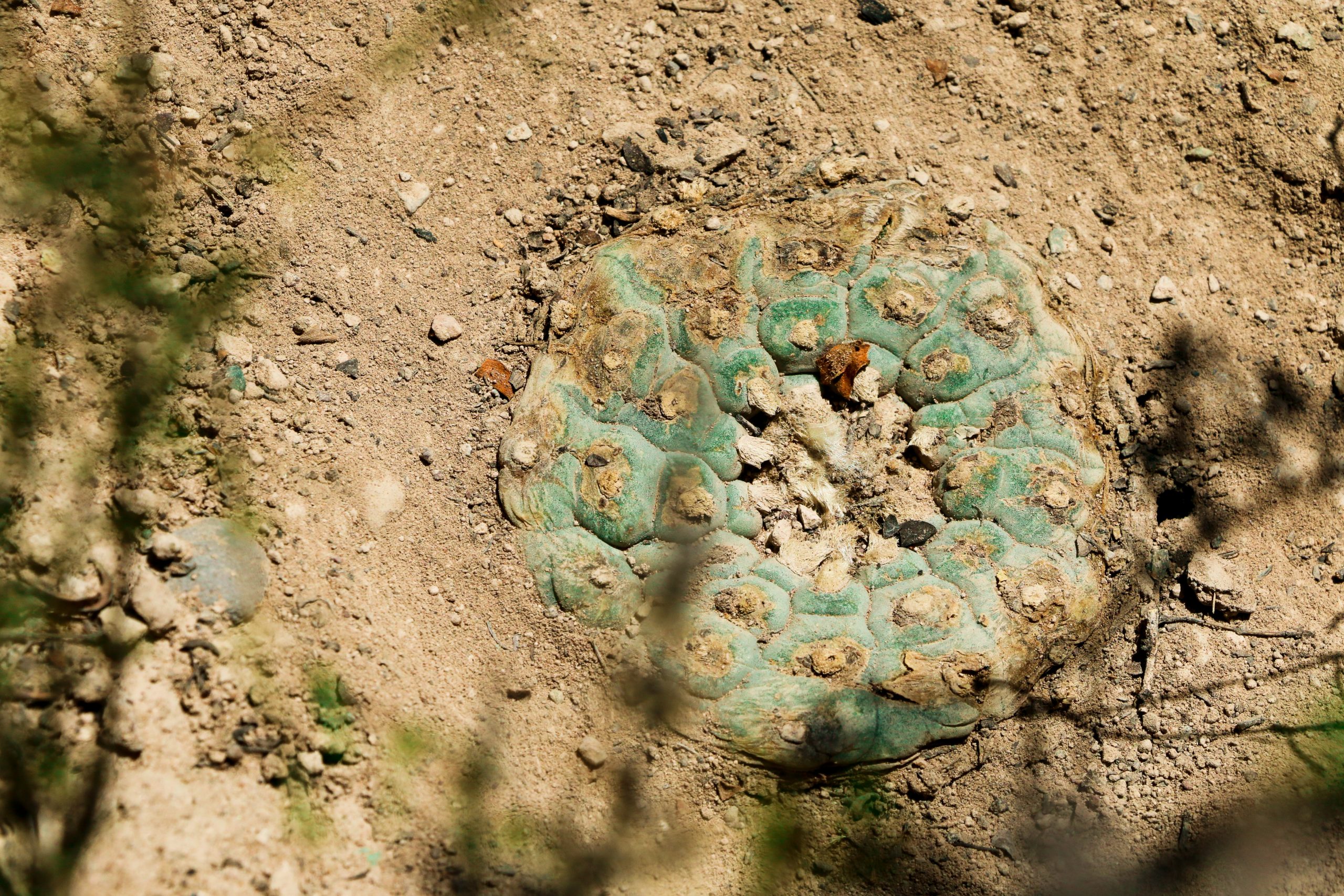
Description

It was not until the late 19th century that Botanist John Coulter was able to determine the classification of Peyote as belonging to the genus Lophophora, comprising only two species, Lophophora Diffusa and Lophophora Williamsii.
The Peyote (add it to your basket) is a cactus species belonging to the large family of Cactaceae, which has about 2500 species in the world. Cacti have several particularities, including that of being able to store their water supply for large periods of drought. Unlike many cacti, the body of this cactus has no spines or hairs.
In most cases, you will find peyote of blue-green to grey-green colour. It has the shape of a flattened ball. Its height varies between 2.5 and 7.5 cm on average and its diameter is on average between 5 and 7.5 cm. This cactus has a slow growth on the surface. Its roots, on the other hand, are almost carrot-shaped and grow vigorously. This small globe sculpted in the form of a nipple has furrows and woolly areolas.
Lophophora williamsii history
Because Poyotl has powerful hallucinogenic properties, Native Americans have used it for centuries in sacred rituals to come into contact with the afterlife. Psychotropics provoke daydreams full of bright colors and auditory hallucinations that are necessary to visualize the future by shamans and the community.
Even today, in Mexico, these rituals are performed by the indigenous people Huichol. The Peyote rite is performed as a group by the entire community.
Consumption of Peyote
Why use it?
For its psychotropic effects
Peyote (Lophophora williamsii) has entheogenic, psychotropic and hallucinogenic properties. Among the chemical components that distinguish it, the mescaline or alkaloid of peyote (Delay, Psychol. méd., 1953, p.222), is the substance that causes hallucinations.
Chemically, of the fifteen alkaloids isolated in the plant (including anhalamine, anhalinine and peyotline) mescaline is the most sought after for its effects.
For its health benefits
Some Native American tribes in the southern United States also use the Peyote for its healing powers. In addition to using it for its psychotropic effects, they use it to relieve several types of ailments.
Peyote is commonly sold in pharmacies in Mexico. In some places, many people use it as an “Aspirin”. Once infused, Peyote tea is ingested to relieve a cold or intestinal problems for example. Externally, as topical it is used to relieve a snake bite.
It should be noted that to this day, science does not officially recognize the virtues of the Peyote, which have always been praised by indigenous tribes, but that research is underway.
How to use it?
There are four ways to consume it.
1. The first is to ingest mescaline extract. Per person, between 150 and 700mg mescaline is required. Doses are calculated based on body weight. There is an average of 3.75 mg per kilogram of body mass.
– The threshold: 100 mg mescaline
– Low dose: 100-200 mg mescaline
– Average dose: 200-300 mg mescaline
– High dose: 300-500 mg mescaline
– Very high dose: 500-700 mg mescaline
- The second way is to ingest dried Peyote buds in very fine powder. During ceremonies, 30 to 150 grams of Peyote buds are usually ingested. One can count four to twelve Peyote buds per person. Although the entire dose is ingested gradually throughout the night. Obviously, the concentration of each plant is different, it is difficult to be precise in the dosage without having taken the mescaline of the Peyote beforehand. But we can still rely on this rule of dosage which remains quite reliable:For a sweeter trip, you will need 15 grams of dried peyoteFor an average trip, 20 grams of dried peyoteFor a more intense trip, count 30 grams of dried peyote
- The third way is in infusion. Simply pour boiling water on your dried shredded cactus and let it infuse.
- The fourth (from our point of view, the least preferable) is to consume it raw. In this case, you will need about 150GR of fresh peyote (see stock) for hallucinations of average intensity. If you choose to consume it raw, know that it is very bitter and pungent and will probably give you more nausea or even vomiting than other methods of ingestion.
Effects
Peyote has been used for thousands of years for its hallucinogenic properties and it remains one of the most powerful psychotropics. It can cause powerful visual and auditory hallucinations and waking dreams. It can be the source of profound change for the user in search of himself following revelations obtained during his trip.
Before the effects appear, some time may pass. Nausea, cramping, vomiting and intense crying can occur. The tribes who practice its rituals consider this phase as the one where one purifies one’s body and spirit. The effects then gradually manifest for 2 to 4 hours to reach a second phase where intense pleasures, psychedelic effects, sometimes sound of paranoia can arise. You can count from 10 to 14 hours for the total experience. In the last phase, the experience becomes calmer. It is at this moment that there are revelations, introspection, clarity of thought and a kind of inner calm.
No studies show dependence on mescaline or Peyote. Some Mexican communities even use it to beat the expenditure of alcohol or some other substance.
Cultivation and spread of Lophophora williamsii
Choose the seeds or a mother plant?
If you choose to get into the culture of a Lophophora Williamsii, there are two possibilities. Either you buy* a mother’s foot or you buy seedlings/seeds to plant them yourself in a pot (warning! slow growth).
*Please note that we make sure we always have them in stock. We offer easy and secure payment methods. And we make a discreet and fast delivery. It is possible to order your cactus by internet. Our packaging for our products and for our plants are discreet and they have been designed so that the products do not suffer during the trip. If you have any questions about products or doubts about the shipment of your order and its delivery, we are at your disposal to answer them and it is possible to contact the customer service by e-mail on the contact page.
Propagation
Division of new shoots
Peyote sometimes grows alone but is often found in groups, it naturally multiplies itself. It is possible at home to separate these new shoots and transplant them individually into pots. To do so, gently dig up your Peyote and delicately clear the soil to discover its root. Detach each plant with your fingers. You can find a cactus substrate in a garden centre or create it yourself. To do this, here is a simple recipe.
– 1 quantity of soil (simple garden soil)
– 1 amount of soil (rich in organic matter)
– 1 amount of sand (important for drainage)
Propagation with seeds
It takes about 1 year before your seeds become small cactus.
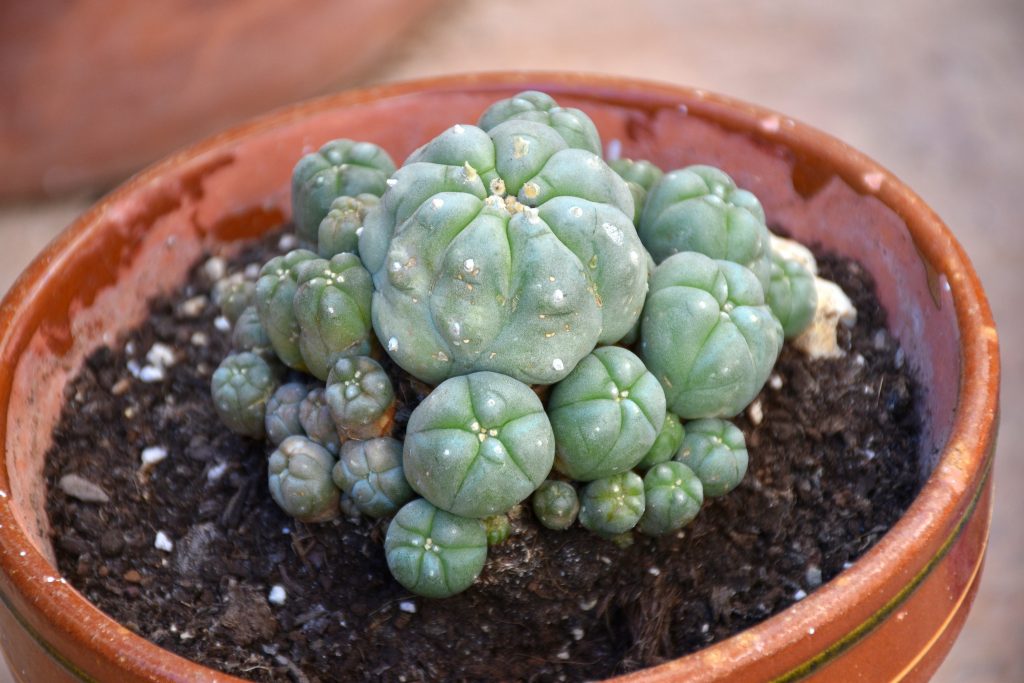
Sun exposure and temperature
At home, you will have to guarantee your plant the best growing conditions to ensure a good growth in pot. Choose a location in the sun, with a southern exposure, preferably. As this cactus comes from the desert regions of Mexico, it needs at least 10°C, so there is no question of planting it in the garden if you live in Northern Europe.
Watering
Peyote does not require much attention. The amount of water to bring is minimal. From April to September, water once a week and once a month for the rest of the year. It is not susceptible to disease. But be careful! One of the most common mistakes is to over-water a cactus. Too much water could rot its roots.
If you start with Peyote seeds or if you have to repot it in a larger pot, you will have to do it in a calcareous and sandy soil. Make sure you have holes in your pot to ensure good drainage when watering, the Peyote especially does not like to have feet in the water!
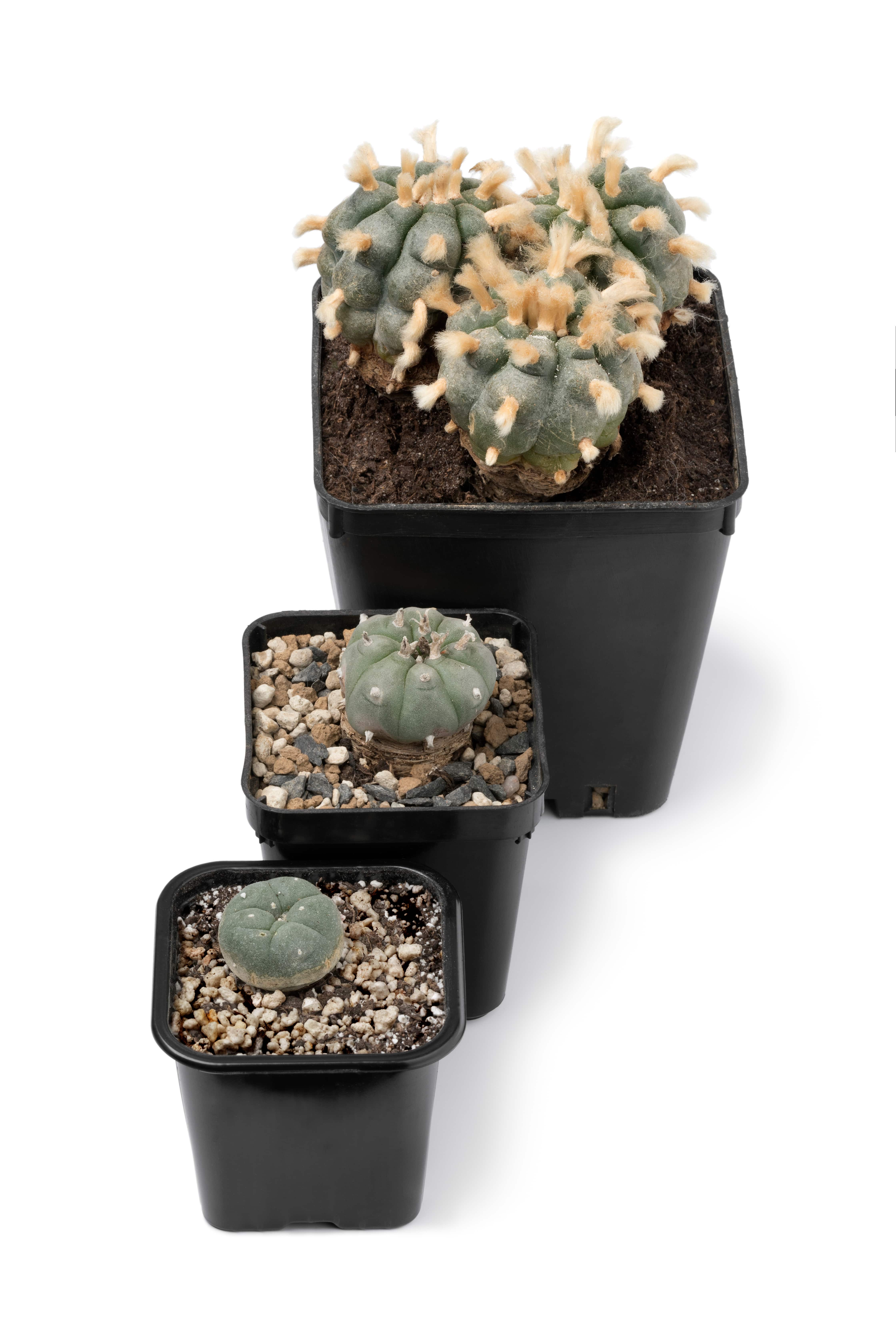
Growth
All Lophophora species have slow growth, often taking up to thirty years to reach flowering age in nature (about the size of a golf ball, not counting its root). Specimens grown indoor grow considerably faster, typically taking six to ten years from seeding to mature flowering.
Blooming
Before seeing the first flower or flowers of your Peyote Lophophora, it could take 6 years (between 10 and 30 years in its natural habitat). The flower appears between May and September. You will find specimens of Lophophora Williamsii with pink or more or less white flowers. Its flowers open only during the day and last only 2 or 3 days. Only then will its red fruit appear, containing tiny black seeds. Peyote fruit will take up to 1 year to mature.
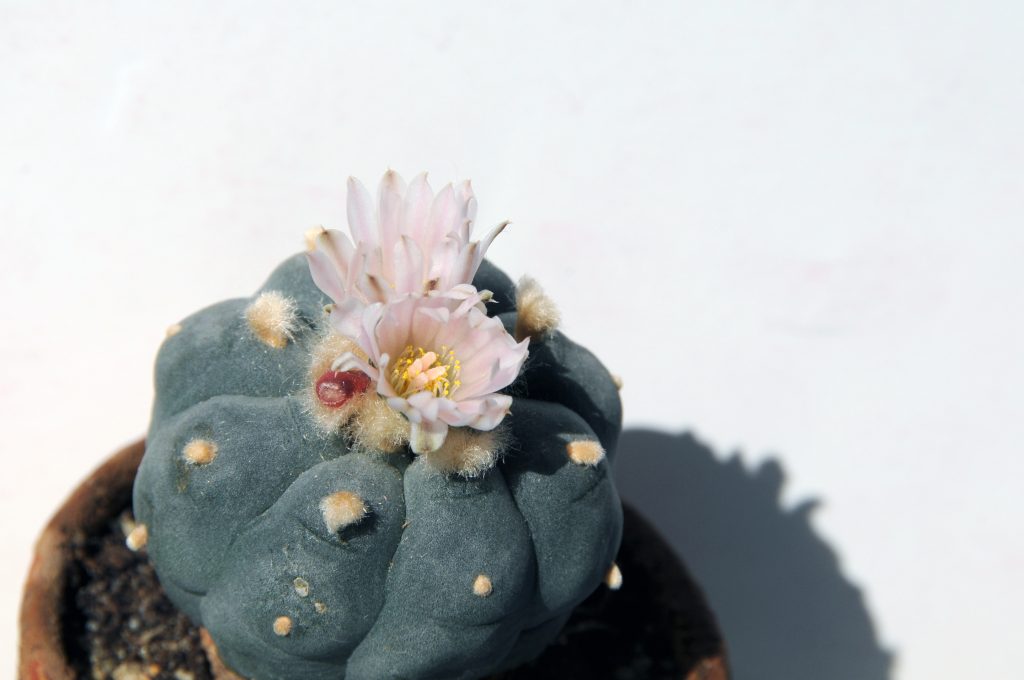
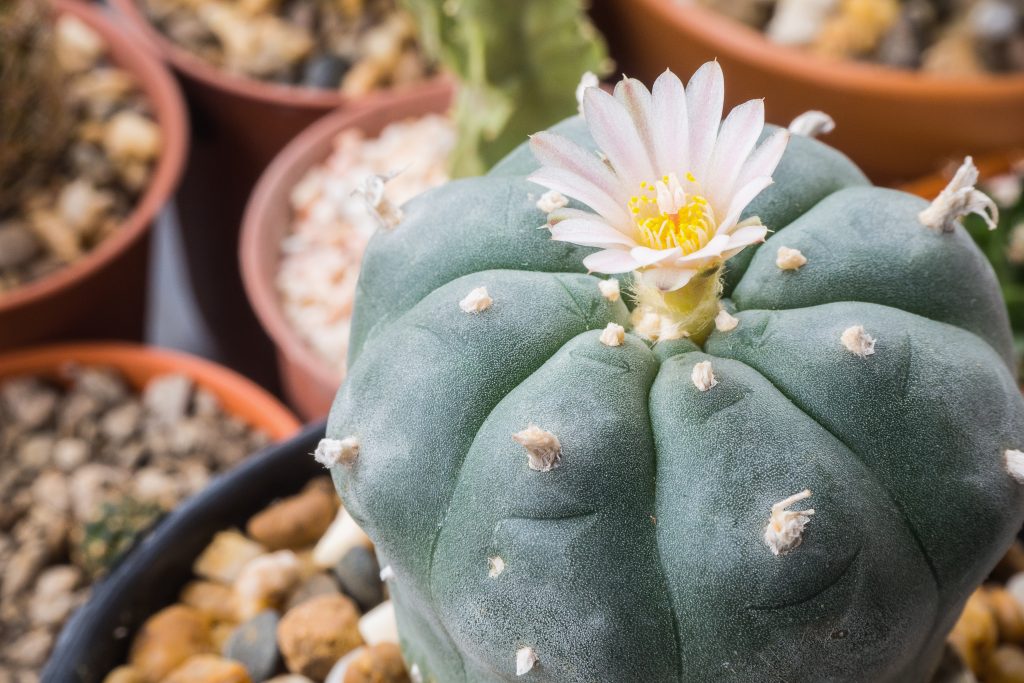
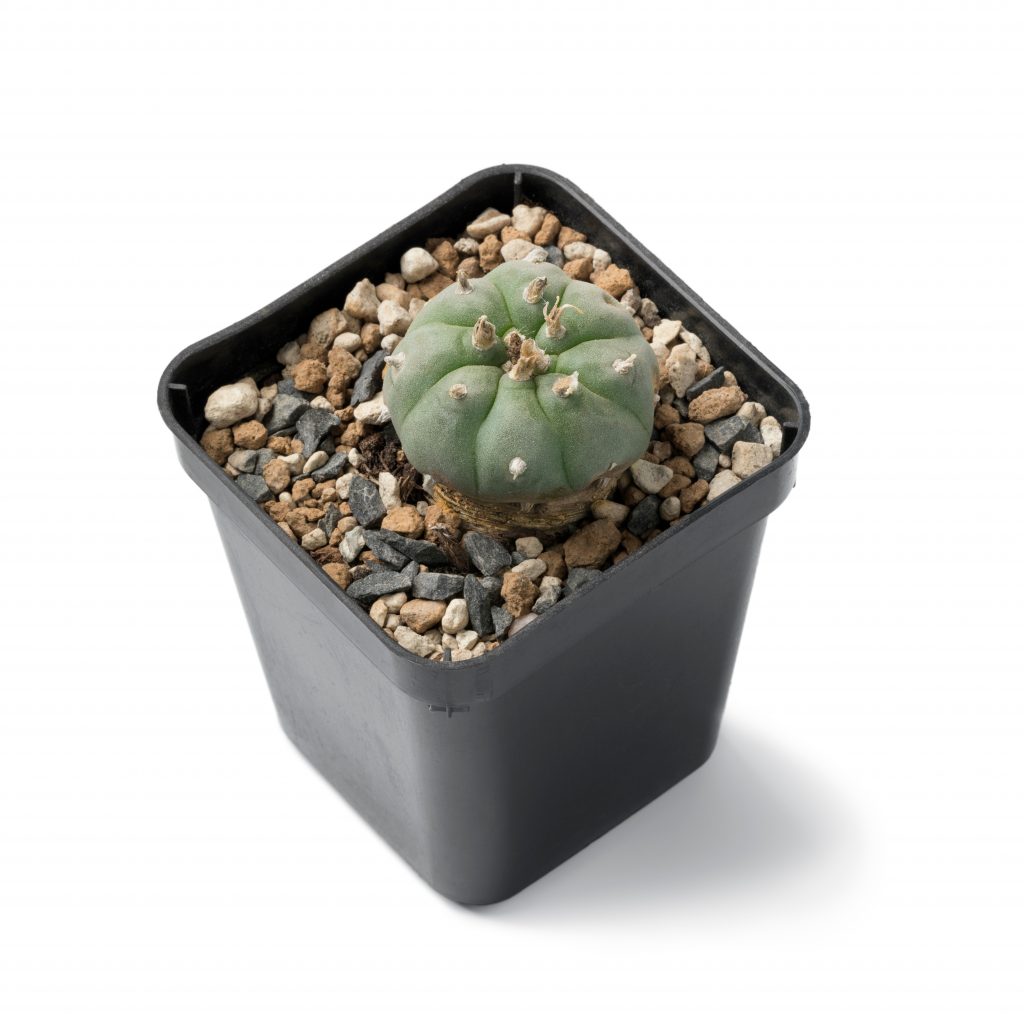

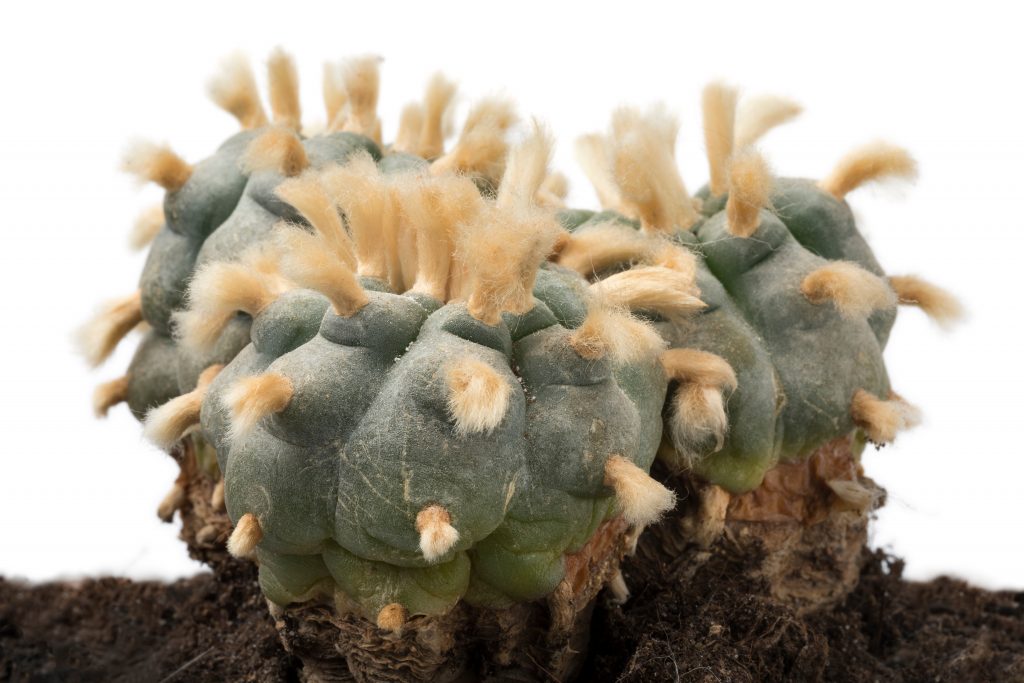
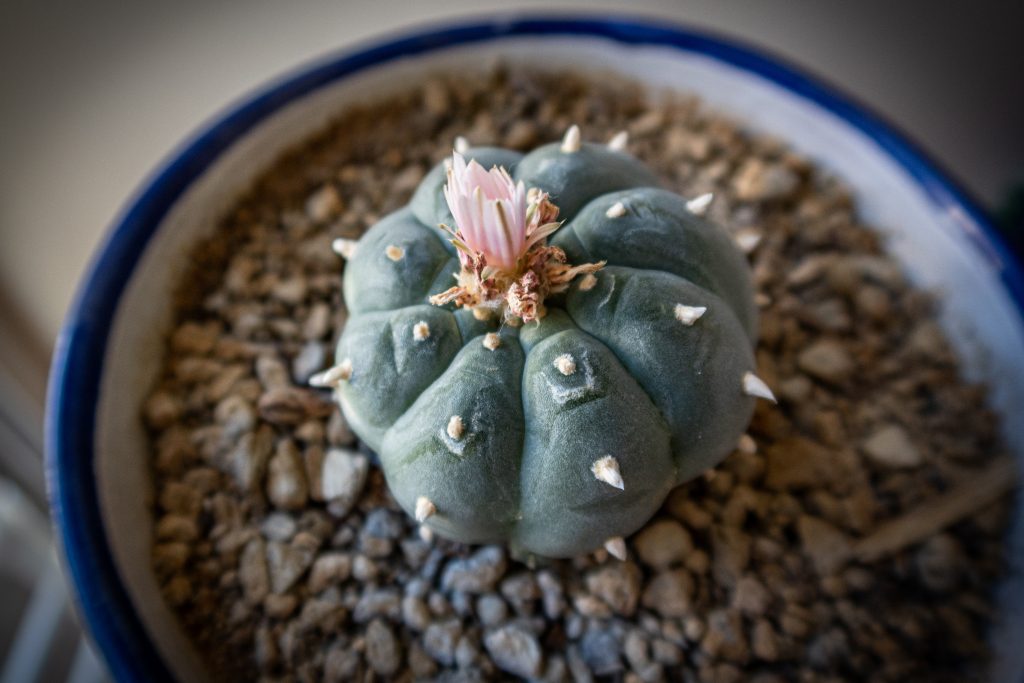
Internal links
– Add Lophophora williamsii/seed seedlings to your basket
– Add a Peyote plant to your cart
– Payment method or payment issues
– Main page
Références:
- Curtis’s Botanical Magazine in 1847 (plate 4296).
- Stephen Schloesser, Visions of Amen: The Early Life and Music of Olivier Messiaen. P165 2014
- Bot., 1960, p.1058 [Encyclop. de la Pléiade]

